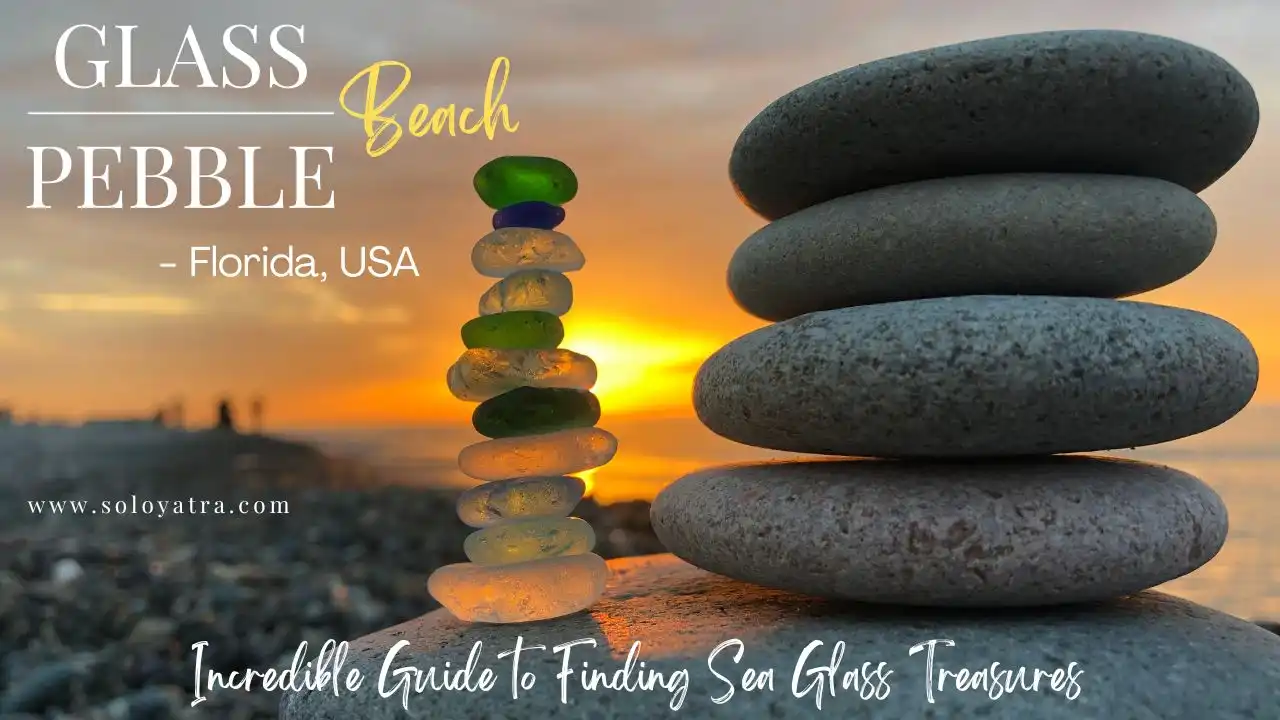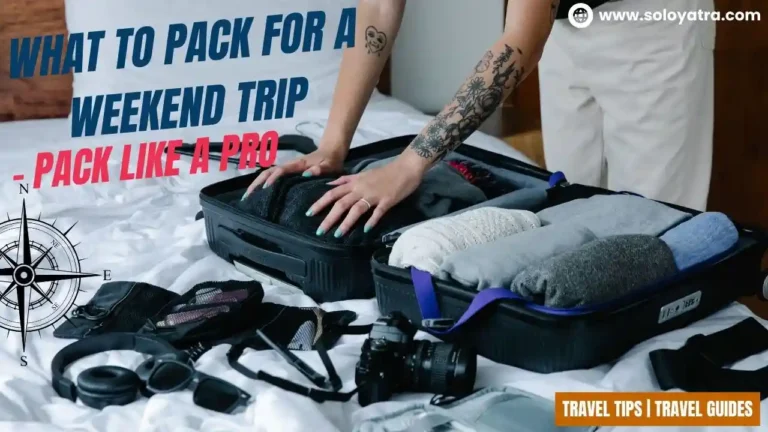Glass Pebble Beach Florida: Incredible Guide to Finding Sea Glass Treasures (2024)
Introduction
Nestled along Florida’s pristine southwest coastline lies a hidden gem known as Glass Pebble Beach. Though lesser-known than its more famous neighbors, this secluded stretch of sand contains a breathtaking abundance of sea glass pieces in an array of dazzling colors. From rare cobalt blues to sunshine yellows, these smooth glass fragments catch the light and sparkle like jewels scattered across the sand. With the right timing and some inside knowledge, you too can uncover Glass Pebble Beach’s mesmerizing treasures.
This guide will unveil the secrets of this magical beach, from understanding the optimal conditions for sea glass hunting to discovering secluded coves and picturesque points. You’ll learn pro tips and tricks from experienced beachcombers for spotting elusive glass gems. We’ll also provide a list of distinct beaches within Glass Pebble Beach, each with its own unique charm and bounty waiting to be found. With the proper preparation and adventurous spirit, a treasure trove of sea glass could await you. So grab your sunscreen and shovel, and let’s embark on uncovering the sparkling wonders of Glass Pebble Beach!
Do read the People Also Ask (FAQs) about this topic.
Key Takeaway
| Key Takeaways |
|---|
| Sea glass forms when glass pieces tumble in the ocean for years, becoming frosted and smoothed. |
| Prime sea glass beaches have strong waves and currents to wash in glass fragments. |
| Search 2-3 days after storms for the best finds freshly churned up by waves. |
| Scan along the high tide line and sift through seaweed for hidden gems. |
| Rare colors include blues, greens, oranges, yellows, and turquoise. |
| Crafting jewelry, art, and home decor repurposes collected sea glass beautifully. |
| Responsible collecting means taking only what you need and following beach laws. |
| Proper gear like shoes, bags, and sun protection enhances the experience. |
| Appreciate the natural beach environment, not just the glass treasures. |
What is sea glass?
Sea glass is formed when pieces of glass end up in the ocean and are tumble-polished by the waves and sand over many years. The constant motion wears down the sharp edges and frosts the surface. Sun exposure also causes the glass to acquire a distinctive patina. While sea glass can come in any color, the most common hues found are kelly green, brown, white, and blue. More rare colors include orange, red, purple, yellow, and turquoise. The wide range of colors comes from different sources of glass waste, like bottles, tableware, or fishing floats.
Sea glass varies in shape and size, from tiny splinters to large shards several inches long. Rare finds like stoppers, marble-sized pieces, and intact bottles are highly prized by collectors. The longer the glass remains in the ocean, the more rounded, smoothed, and delicate it becomes. Tiny fragments often resemble gems or candy.
Searching for sea glass connects us to nature’s beauty while preserving remnants of the past. Beachcombing provides exercise, stress relief, and family fun. Sea glass jewelry and crafts let creators repurpose little bits of history into wearable art.
Where to Find Sea Glass in Florida
Florida’s 1,350 miles of coastline provide ample opportunity to search for sea glass treasures. However, some beaches are especially fruitful due to factors like stronger wave action, proximity to former dump sites, and limited foot traffic. Here are some of the top places in Florida to find sea glass:
East Coast:
Beach 1: Captiva Island
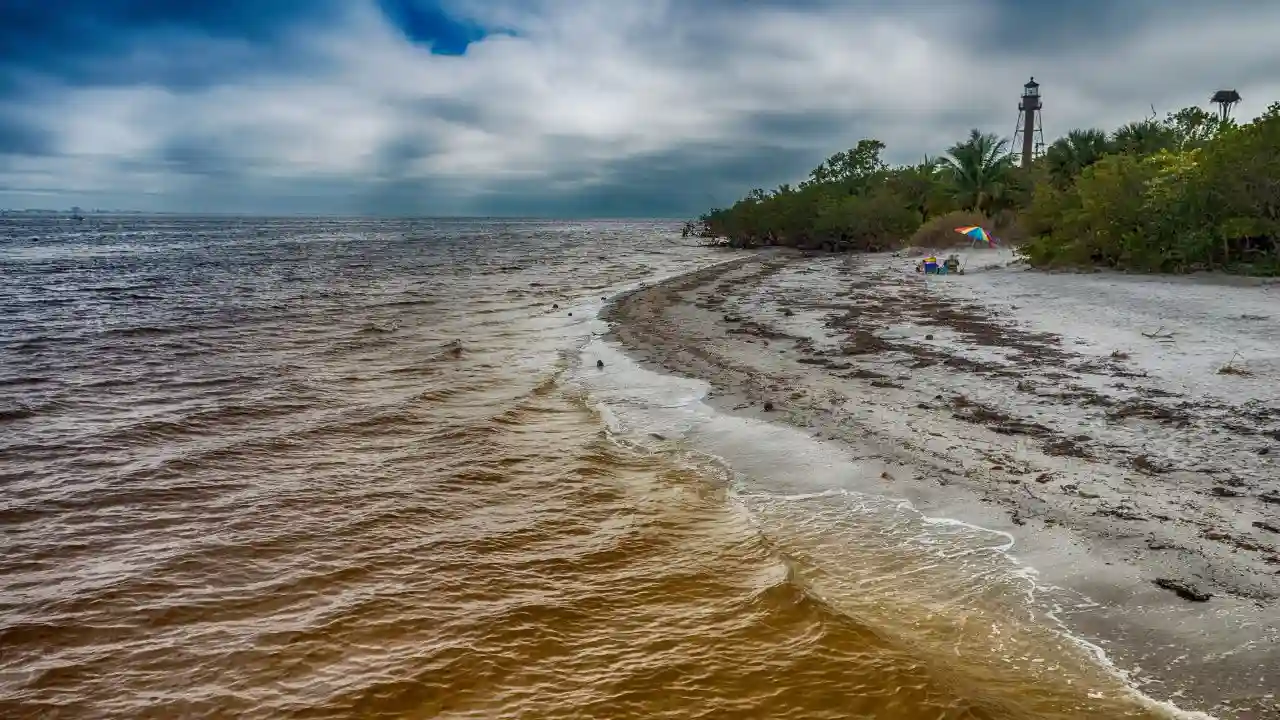
Captiva Island’s secluded coastline offers over 11 miles of prime sea glass hunting, especially on the quieter north and south end beaches. Currents deposit smooth frosted shards in hues of aqua, forest green, and white most commonly. During winter and early spring, fragments wash up more frequently when northerly winds prevail. Staying at one of Captiva’s beach resorts or rentals provides access to emptier stretches of sand, allowing you to rise early and scan the high tide lines before crowds arrive. With luck, you may uncover rare cobalt blue sea glass treasures.
Beach 2: Hutchinson Island
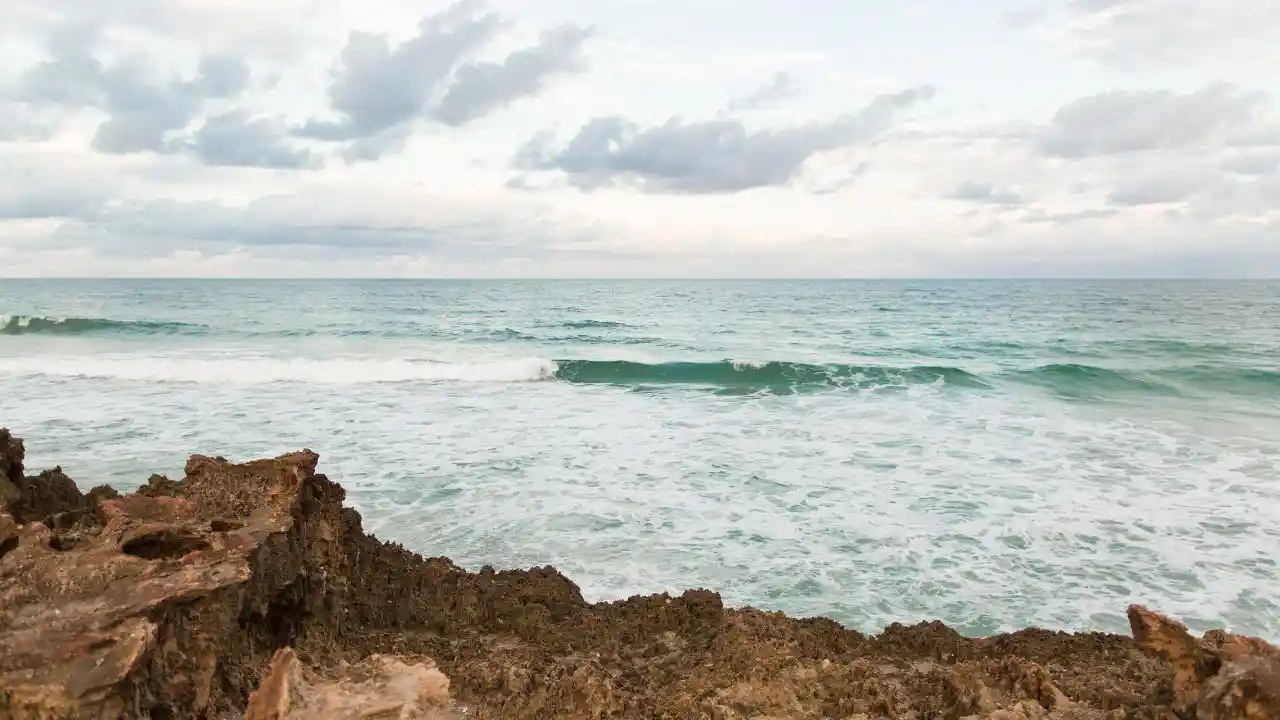
The long, uninterrupted beaches surrounding Stuart and Jensen Beach on Hutchinson Island provide plentiful sea glass finds. Jensen Beach Park is a good public starting point, with opportunities to spot glass especially after storms stir up waves and deposit debris. Early mornings before crowds accumulate are ideal for combing the sand and spotting glints of buried treasure. With diligent searching along Hutchinson’s shores, intact century-old glass bottles can still be unearthed.
Beach 3: Jupiter Island
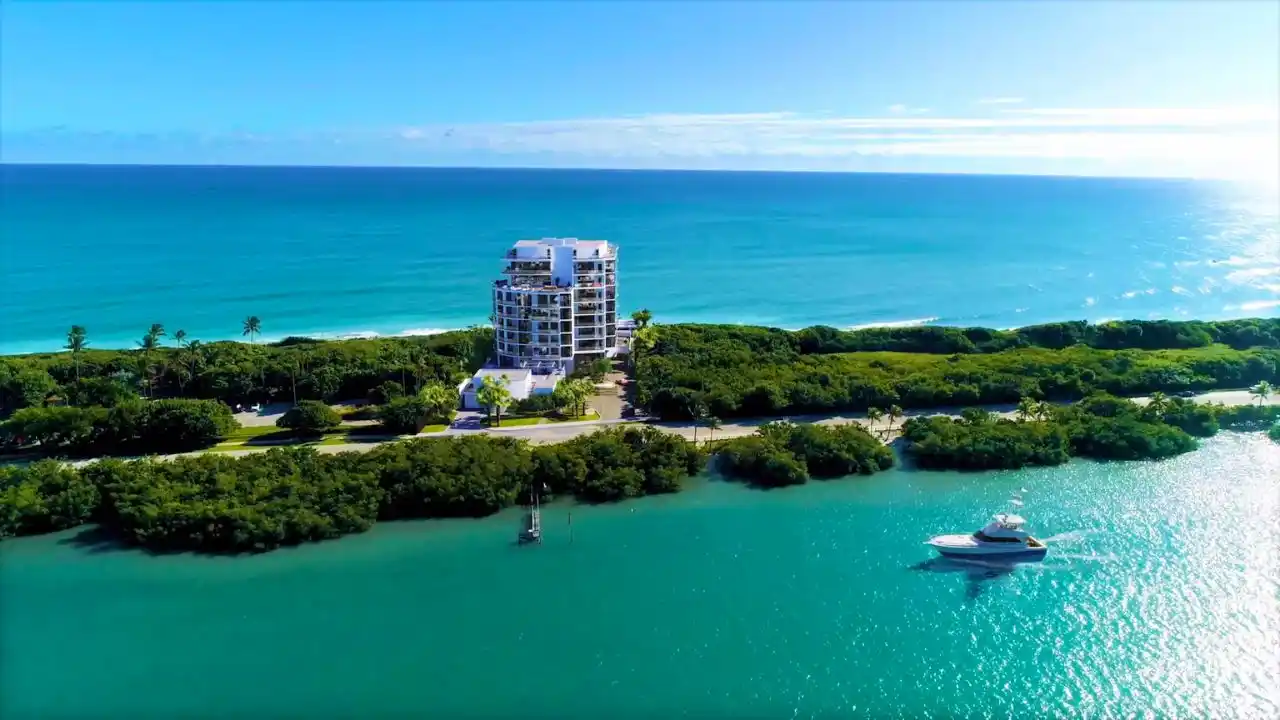
Though more exclusive with limited public access, Jupiter Island’s beaches still yield abundant sea glass discoveries, thanks to active currents. Trying access points near Jupiter Inlet improves your chances, especially early morning or at low tide when receding water reveals glittering gems. Because of its remoteness, Jupiter Island produces more unusual hues and rare glass fragments than busier beaches. A sense of discovery awaits those who explore here.
West Coast:
Beach 4: Sanibel Island (Bowman’s Beach)
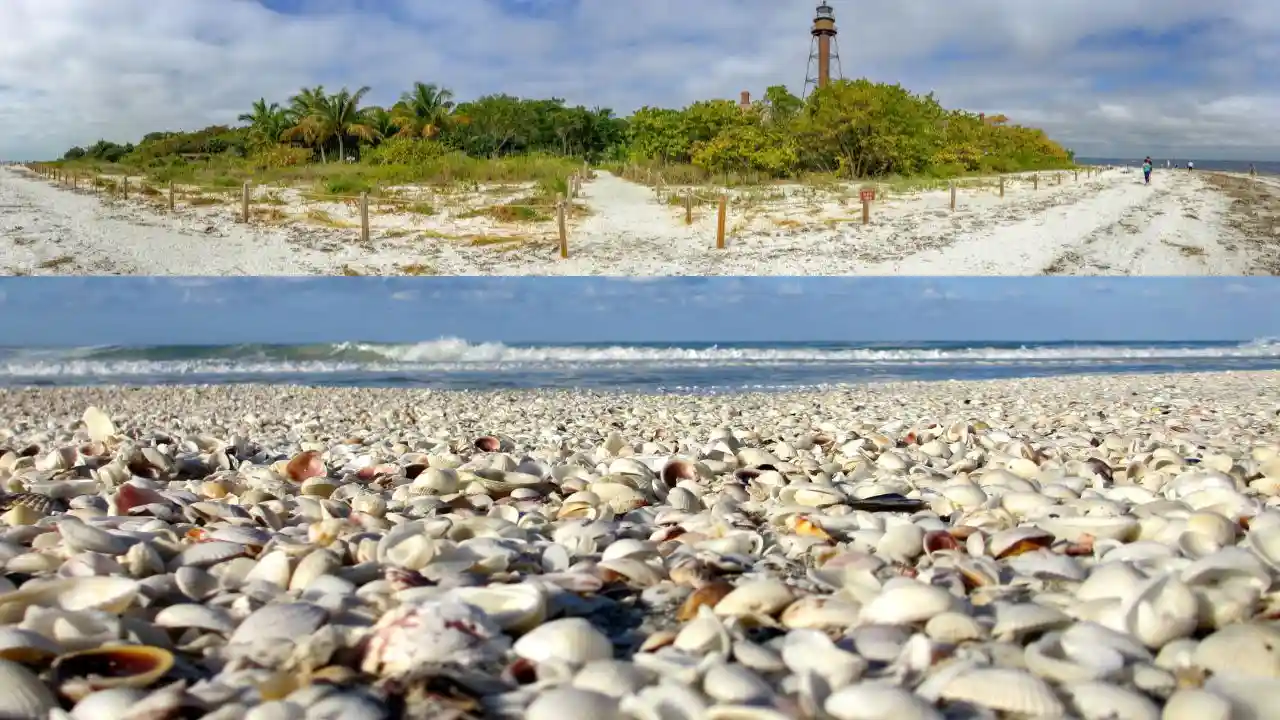
World-famous Sanibel Island offers a sea glass hunter’s paradise, especially at Bowman’s Beach. The area yields concentrated amounts of frosted glass in dazzling colors, with Sanibel renowned for producing the greatest variety of rare antique glass. For guaranteeing sparkling finds, Bowman’s Beach should top any sea glass seeker’s Florida destination list.
Beach 5: Cayo Costa State Park
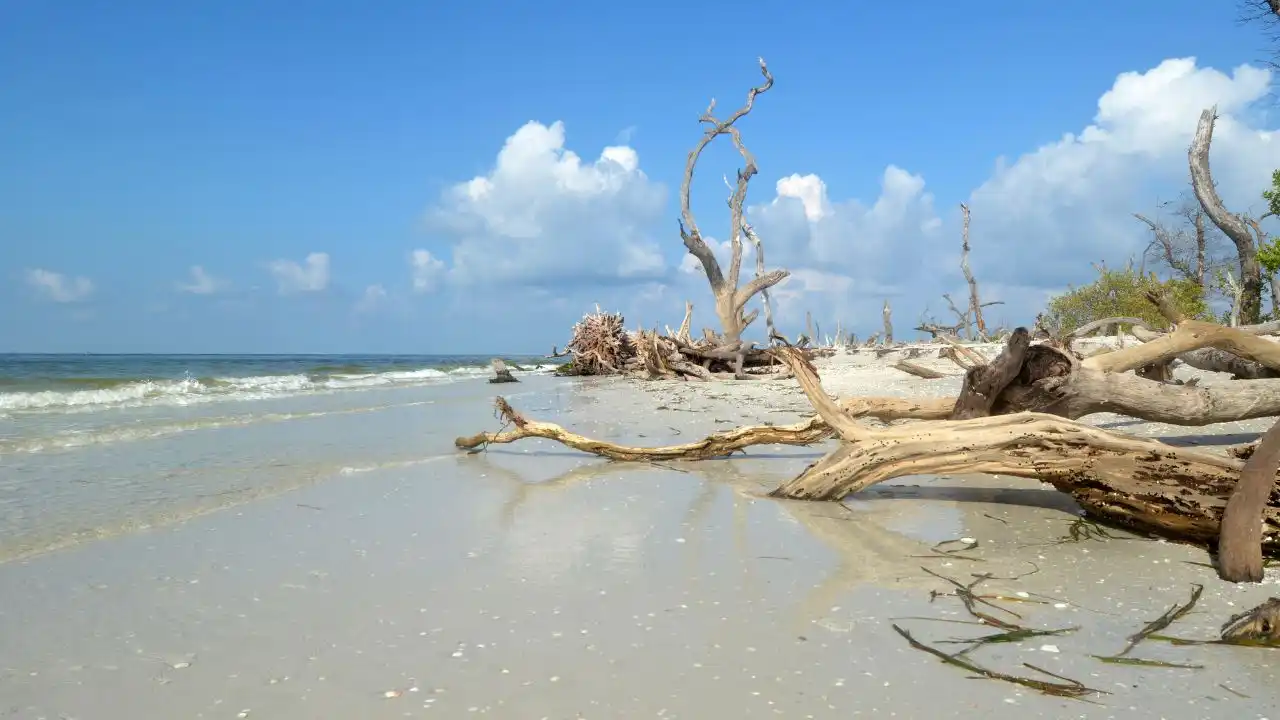
Reachable only by boat, the shores of Cayo Costa State Park offer remote sea glass hunting with minimal crowds. The 1-mile stretch from the dock to the beach is a prime area to spot glass fragments washed up in the wrack line. Green and brown bottled glass tend to be the most common, but pearly white and blue pieces can make rare appearances. Cayo Costa’s isolation and lack of visitors increase the chances of discovery.
Beach 6: Navarre Beach
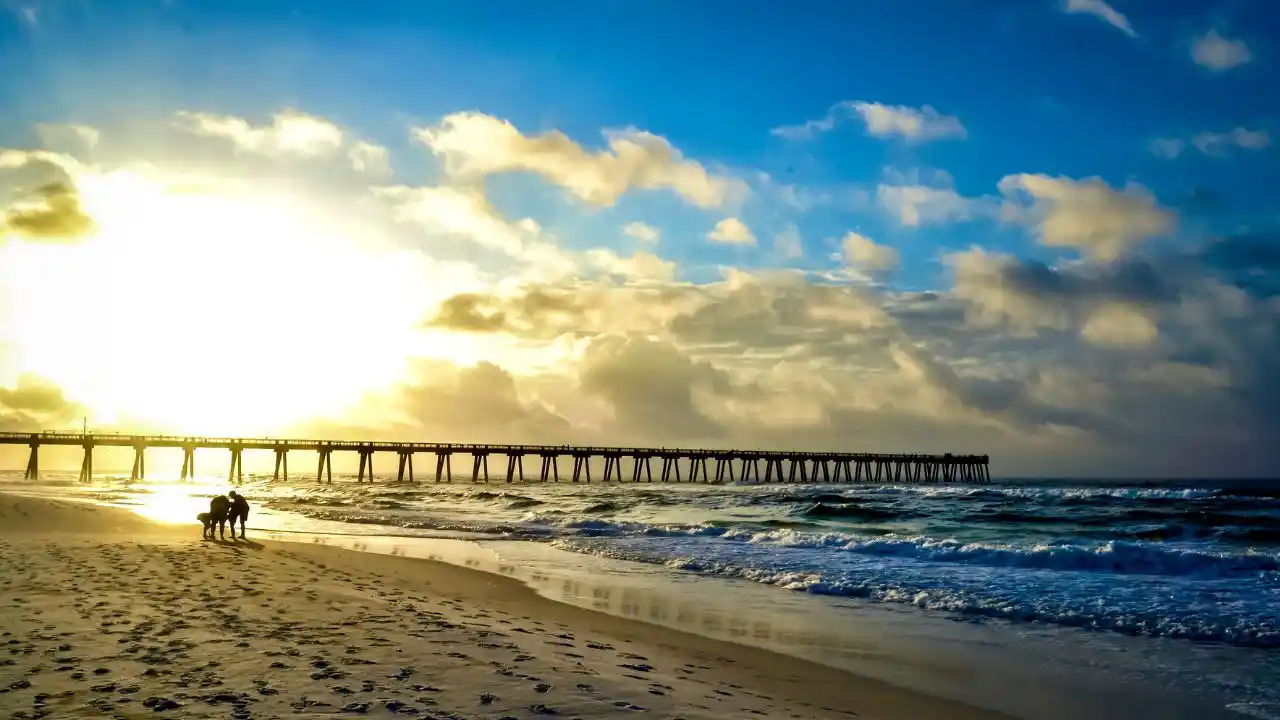
An excellent option for NW Florida, Navarre Beach produces quality sea glass finds, especially around the Navarre Beach Fishing Pier. Calm surf is better than heavy waves here for spotting shards buried in the sand. Early fall after an active hurricane season brings optimum conditions for beachcombing. Shelling and fishing enthusiasts already flock here, but take time to scan the sand for glinting glass treasures too.
Beach 7: Siesta Key
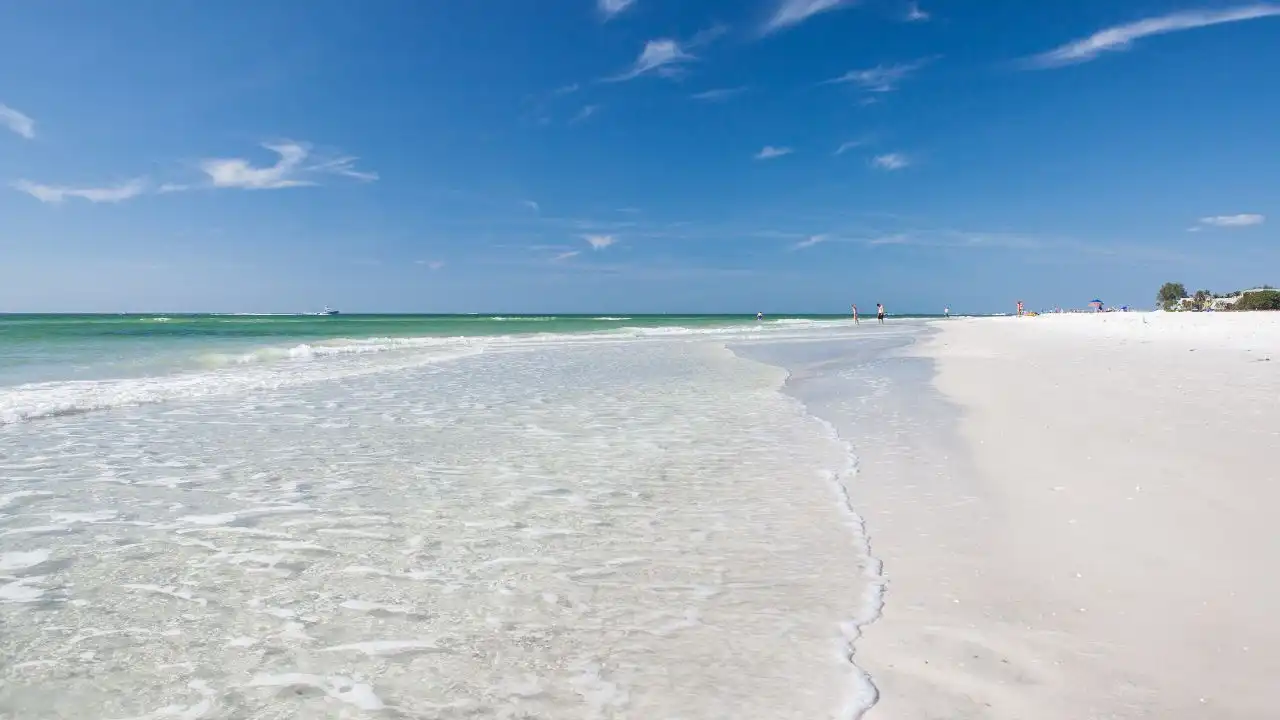
Though heavily visited, Siesta Key still offers sea glass potential, especially near Point of Rocks on the island’s southern end. Low tide is the best time for spying glass pieces exposed in the wet sand. Early morning or shoulder season provides fewer beachgoers to contend with while searching. While challenging, a stunning multi-colored find makes Siesta Key’s hunt worthwhile.
If you love going to beaches then you must check out these Beach Clubs In Cartagena, Columbia.
Tips for Finding Sea Glass in Florida
- Check conditions. Ideal sea glass hunting happens 2-3 days after a storm when the debris has washed up but the waters are still choppy. Calm, low tides expose more treasures.
- Arrive early. Get to the beach first thing in the morning for the best selection before others pick over the new pieces.
- Scan the high tide line. Concentrate your search along the high tide line and look for glints among debris and shells.
- Bring a basket. Carry a bucket or cloth bag to hold your discoveries and prevent breakage.
- Wear polarized sunglasses. Cutting glare helps spot smoothed glass that blends with wet sand and pebbles.
- Wade in shallow water. Wade into knee-deep water to find smaller sea glass churned up by waves.
- Dig through the seaweed. Piles of seaweed often contain hidden treasure troves of glass gems.
- Check for storms. Big storms bring in a bounty of new glass. Search a day or two later for peak collecting.
- Walk the entire beach. Glass amounts can vary greatly along the shoreline, so explore the entire stretch.
- Return often. Sea glass constantly changes, so visit your favorite spot regularly for new finds.
The Allure and History of Sea Glass
Sea glass connects us to the past in a tangible way. Each piece represents a fragment of history, from vintage household objects like tableware, lamps, and bottles to actual shipwrecks. Wondering about the story behind your finds adds to the allure.
The glass began as useful items that were lost or discarded and ended up in the ocean through chance events or intentional dumping. After enduring decades of tumbling in the surf, the sharp fragments transformed into the soft, frosted gems we treasure today.
Studies show that interaction with nature provides significant mental and physical benefits. Beachcombing for sea glass engages us with the environment while providing exercise, stress reduction, and family bonding. The popularity of sea glass continues to grow as more people discover the joy of searching for these random gifts from the sea.
Crafting With Sea Glass
The vibrant colors and smooth surfaces of sea glass make it ideal for craft projects. Jewelry is one of the most popular uses, from pendants and charms to rings and bracelets. Wire wrapping or gluing lets you showcase single, spectacular pieces or create colorful combinations.
Sea glass also shines in home decor items like nightlights, sun catchers, mirrors, and votive holders. Multi-colored shards make striking features embedded in picture frames, vases, candles, and serving trays. Even tiny chips mix into mosaic tabletops.
For inspiration, check out sites like Pinterest that showcase the many ways to repurpose collected sea glass into wearable art and decorative objects through creative crafting. Local sea glass festivals also exhibit finished, crafted works.
Get inspired by this gallery of creative sea glass craft ideas: Sea glass craft ideas
Responsible Collecting
When gathering your sea glass treasures, be sure to follow beach regulations and these responsible practices:
- Take only what you need for your project and leave plenty for others to enjoy.
- Handle glass gently to avoid breakage and scattering sharp fragments.
- Do not dig into or disturb sand dunes, which help protect beaches.
- Pack out all trash and do not leave broken glass behind.
- Check local laws, as some beaches prohibit the removal of items.
- When gifts from the sea become litter, dispose of them properly to keep our beaches clean and beautiful.
From jewelry to home decor, crafting with sea glass preserves little pieces of history while showcasing nature’s ability to transform the ordinary into the extraordinary. As you walk Florida’s sandy shores in search of these ocean gems, enjoy reconnecting with the environment and unleashing your inner beachcomber. Let the sparkling, frosted treasures you discover inspire your creativity and appreciation for the coastal wonders of the Sunshine State.
Beyond the Glass: Enjoying the Full Beach Experience
Amid the quest for glittering sea glass, it’s easy to overlook the other natural wonders that Glass Pebble Beach offers. Expand your beach adventures beyond glass collecting by trying these activities:
- Wildlife Watching: Keep an eye out for dolphins playing in the surf, pelicans diving for fish, or tiny ghost crabs scuttling amidst the sand ripples. Early mornings or dusk are ideal viewing hours.
- Beachcombing: Scan the tides for seashells, driftwood, or smoothed beach pebbles that catch your eye. Collect a few special pieces as souvenirs or craft materials. Photograph it and appreciate the rest.
- Relaxation: Enjoy the calming sights and sounds of the waves. Stretch out on the sand with a good book. Let the beach work its rejuvenating magic. Breathe deep and de-stress.
Nearby Attractions:
- Local Shops: Pop into beach boutiques, art galleries, or cafes in communities along the coast. Search for sea glass jewelry or nautically inspired souvenirs.
- State Parks: Explore scenic hiking trails with ocean views. Pack a picnic. Immerse yourself in lush natural scenery.
- Fishing Excursions: Book a half-day fishing charter to catch your own fresh seafood. Watch for dolphins as you reel in snappers and groupers.
While Glass Pebble Beach wows with its sea glass, it also impresses with its unspoiled natural scenery. Take time during your visit to appreciate its full splendor beyond the glass alone. Create unforgettable memories amid this special seaside paradise.
Discover other exciting activities to complement your sea glass hunt in our guide to fun things to do at the beach: Beach activities
Additional Tips
Packing for Your Beachcombing Adventure
A well-planned excursion makes your sea glass quest more comfortable and fruitful. Packing the right gear and supplies helps you safely uncover those hidden gems.
- Sturdy shoes, like water sandals, prevent cuts from debris.
- Polarized sunglasses reduce glare, so you spot more glass.
- Sunscreen, hats, and lip balm prevent burns from beach sun exposure.
- A small shovel or trowel digs up glass trapped in seaweed piles.
- A tote bag or bucket safely contains delicate sea glass finds.
- Drinking water and snacks give energy for long shoreline treks.
- An old towel protects against wet, sandy car seats post-beachcomber.
Exploring the Beach Safely
While searching for sea glass is part of the fun, don’t put safety on the back burner. Follow these tips for secure treasure hunting:
- Check the weather and surf conditions before heading out. Avoid dangerous waves or storms.
- Tell someone your plans, including the beach location and return time.
- Follow lifeguard instructions and warning flags if present. Swim only in designated areas.
- Watch for potential hazards like jellyfish, sharp debris, and slippery rocks.
- Hydrate often and reapply sunscreen to prevent problems from heat and sun exposure.
- Be mindful of your belongings, as the tide can rise quickly. Don’t leave items unattended.
With proper preparation and precautions, you can fully immerse yourself in the sea glass pursuit while avoiding any mishaps. Now get out there and start uncovering those beach gemstones!
Conclusion
The lure of the tide pools draws explorers to Florida’s shores in search of sea glass treasures. These fragments of the past, buffed smooth by tumbling ocean waves, connect us to history in a tangible way. Hunting for them immerses us in the natural rhythms of the sea while providing exercise, stress relief, and family bonding.
The best success comes from understanding optimal conditions, expanding your search zone, and employing expert spotting techniques. Follow the guidelines for responsible collecting to preserve beach habitats. Proper preparation ensures a safe and rewarding beachcombing adventure.
Let Florida’s sea-glass beaches awaken your inner explorer. Delight in nature’s ability to transform broken shards into gems. Craft them into art, create new memories, and uncover deeper connections. Return home not just with pocketfuls of colorful glass but also with a refreshed spirit, expanded perspective, and gratitude for the gifts constantly delivered to us by the sea.
Ready to plan your sea glass adventure? Check out our list of recommended beach accommodations near Glass Pebble Beach: Tripadvisor
People Also Ask (FAQs)
Q) Is there a glass beach in Florida?
A) Yes, there is a beach in northern Florida called Glass Beach that is known for the sea glass constantly washing ashore. Located within MacKerricher State Park near Fort Bragg, this former dump site dating back to the early 1900s is now covered in smoothed, colorful glass fragments.
Q) Where is Glass Pebble Beach in the US?
A) Glass Pebble Beach is located along the northern California coast within MacKerricher State Park, about 5 miles north of Fort Bragg. The beach gets its name from the abundant colorful sea glass pieces that litter the shore due to the dumping of glass waste nearby decades ago.
Q) Is beach glass expensive?
A) Pricing for beach glass varies greatly depending on rarity, size, color, and quality. Small, common pieces can sell for 25 cents to $1. Rare colors or large, intact bottles command higher prices, ranging from $50 to the hundreds. Exceptional museum-quality pieces may fetch thousands from serious collectors. Most sea glass is still an affordable treasure.
Q) What happened to the glass beach?
A) The original Glass Beach near Fort Bragg was closed in 1967 when it became part of a state park. Removal of glass was prohibited, allowing new pieces to accumulate naturally. Rising tourism took away much of the beach glass, though some are still found. Parking fees and strict rules now limit overcrowding and habitat destruction.

